Sales Enablement Software Guide 2025: Top 20 Tools Across 6 Categories
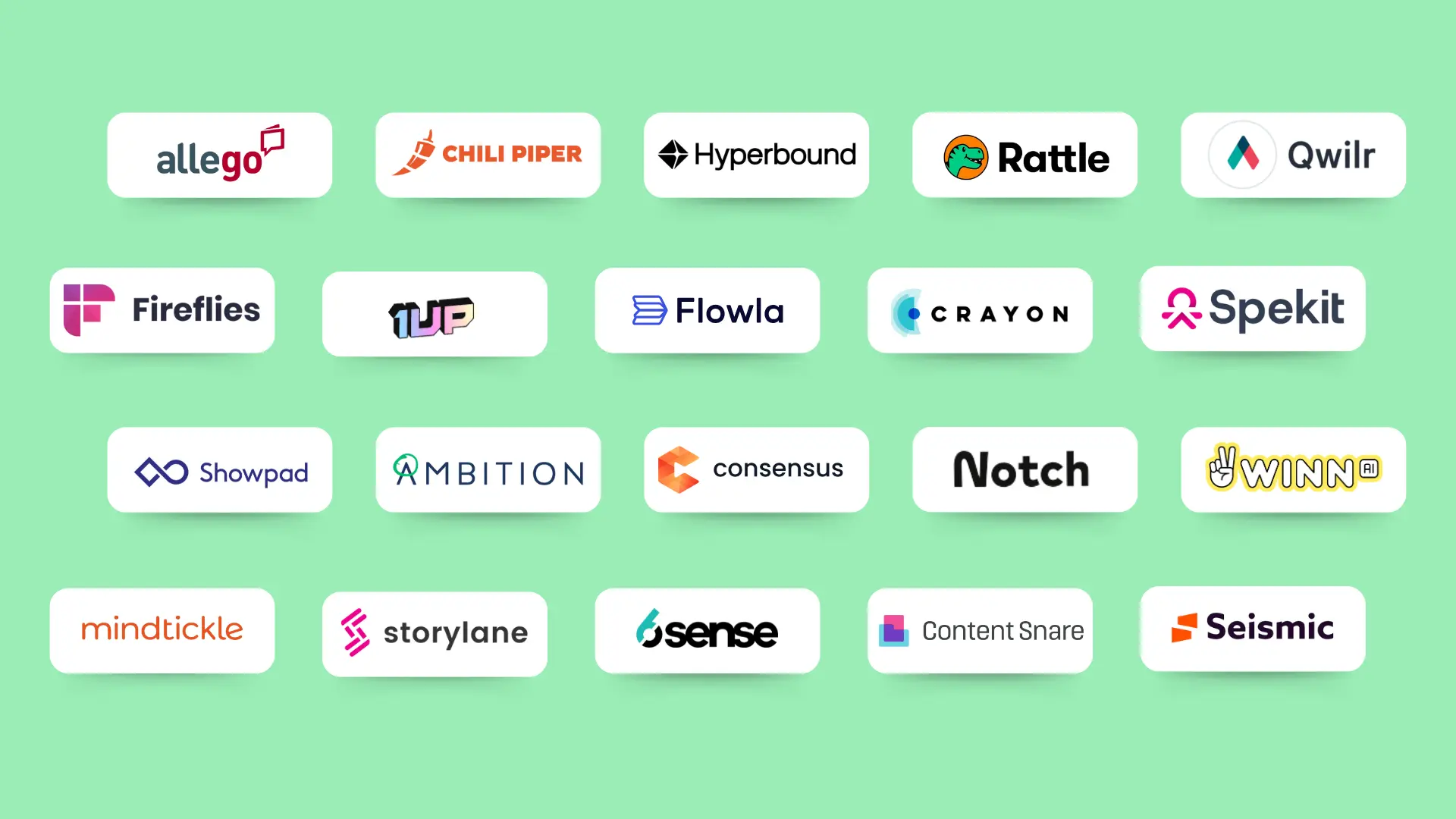
According to our research, nearly half of buyers (45%) say the most valuable thing a seller can do is share the right information at the right time. Meanwhile, 92.9% of sellers believe their job is to help buyers better understand their own problems.
This gap matters, and it’s growing.
Buyers want clarity and momentum. Sellers want to guide and educate. But without the right tools to support both, deals stall in a sea of disjointed emails, lost content, and missed follow-ups.
That’s where sales enablement software comes in.
In this post, we break down the top sales enablement tools by category – from content management to deal intelligence – and highlight platforms that are bridging the gap between what sellers do and what buyers need.
.webp)
Top sales enablement software categories to explore (+ recommended tools)
The best sales enablement tools today go far beyond helping reps find a case study or complete onboarding. From content delivery and training to workflow automation and buyer-facing execution, these tools help revenue teams move in sync, reducing friction, boosting productivity, and accelerating deals.
So, let’s break down the most impactful categories of sales enablement software in 2025, along with standout tools in each.
Whether you’re building a modern enablement stack from scratch or looking to fill key gaps, this list will help you choose tools that actually support how your team sells (and how your buyers want to buy).
Content management & sharing
How it helps: Find and share the right content at the right time.
Sales reps lose hours each week digging through folders, Slack messages, or outdated asset libraries just to find the right slide or PDF. A good content management system puts the right sales content for every step of the buying cycle at their fingertips and makes it easy to share it with buyers in context.
The best tools also help track content performance and ensure alignment between Sales and Marketing.
Here are five tools worth exploring:
- Flowla
Flowla gives reps a seamless way to share content with buyers – not through attachments or links, but as part of a tailored, interactive journey. Sales and CS teams can embed decks, videos, interactive demos, documents, and more directly into a virtual deal room.
Unlike traditional CMS tools, Flowla goes beyond access and distribution. It tracks buyer engagement, automates follow-ups, and connects shared content to workflows like onboarding or renewal prep, making it a valuable layer for both content delivery and execution.

- Showpad
Showpad is a well-established content management platform that combines a central asset hub with seller coaching and analytics. Reps can access approved marketing materials, get suggestions based on deal stage or persona, and receive just-in-time training on how to use each piece.
It’s particularly useful for large sales teams that want strong control over brand compliance and seller readiness in one platform.
- Qwilr
Qwilr lets you create beautifully designed, web-based sales documents – think interactive proposals, pitch decks, and case studies that look like mini landing pages. You can embed video, calendars, pricing tables, and more.
It’s especially powerful for making your sales content feel polished and differentiated, all while getting insights into what your buyers viewed and for how long.
- Content Snare
While not built specifically for sales teams, Content Snare is a great tool for collecting content inputs from clients or internal teams. If you’re frequently assembling custom onboarding materials, scoping documents, or collaborative proposals, it helps eliminate back-and-forth by structuring the collection process.
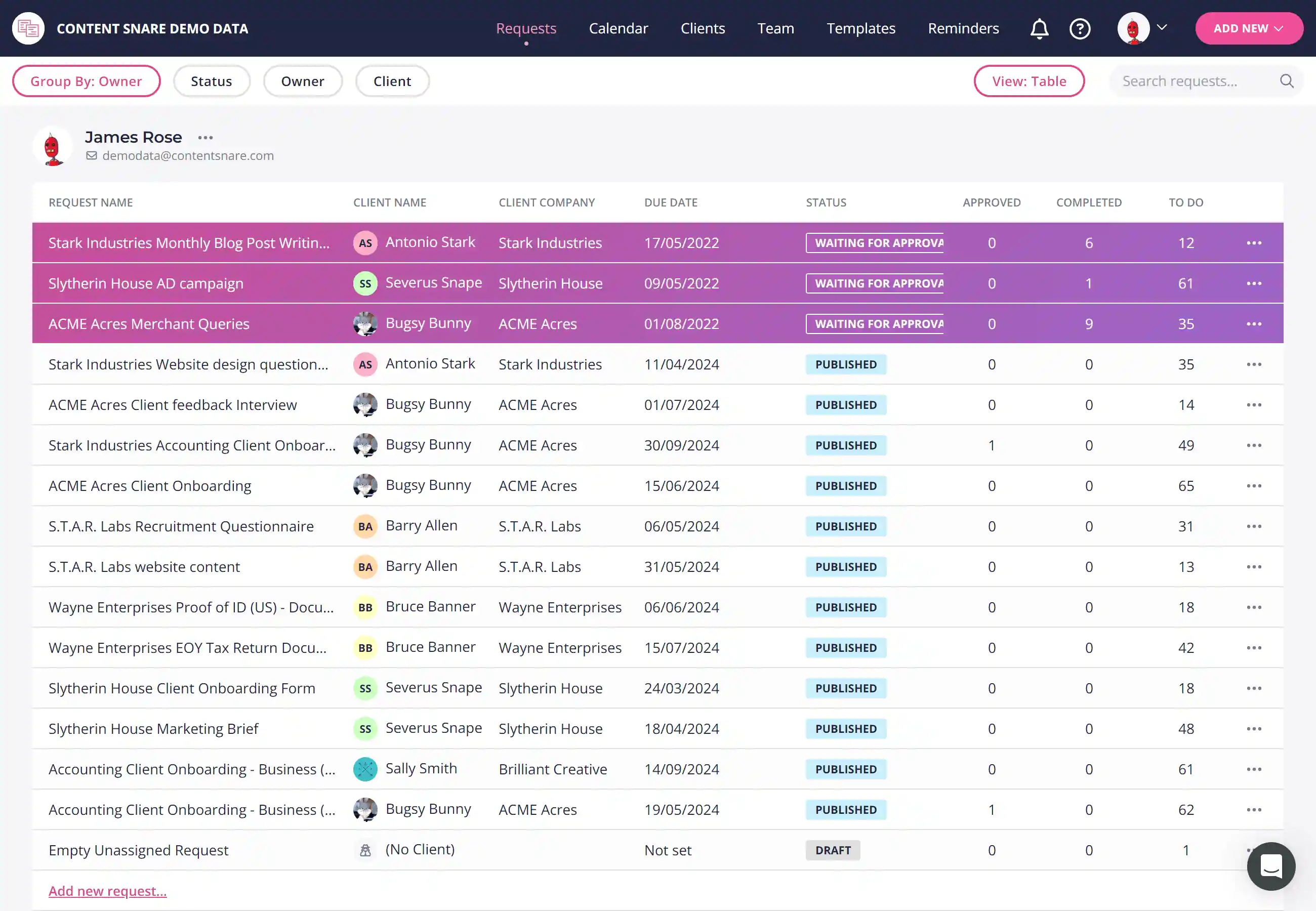
It’s best suited for teams involved in services, implementation, or onboarding workflows.
- Notch
Notch is a minimalist content hub builder that lets you organize sales and marketing collateral into clean, branded spaces. Each piece of content lives behind a short link, and reps can share grouped content in one go.
It’s ideal for lean teams that want a simple way to keep resources organized and buyer-ready without adopting a full-featured CMS.
Sales training & coaching
How it helps: Rep onboarding, ongoing training, and skill development.
Even the most talented reps need guidance, especially when ramping up, learning a new product, or shifting strategy. Sales training and coaching platforms give teams a structured way to onboard faster, reinforce skills over time, and track progress with data, not guesswork.
These tools help managers deliver consistent training at scale, while giving reps opportunities to practice, self-assess, and continuously improve in the flow of work.
Here are five standout tools in this space:
- Docebo
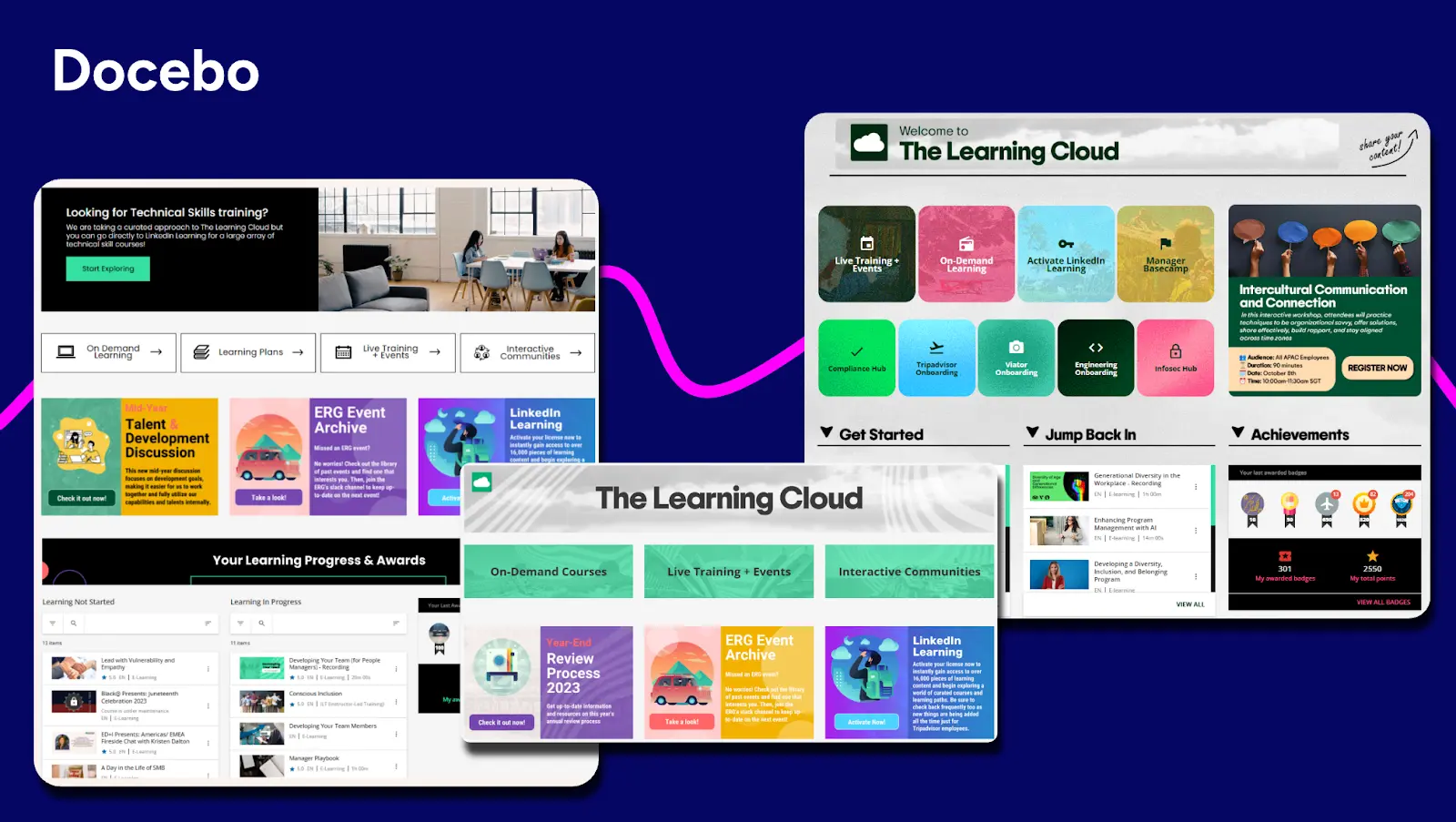
Docebo delivers AI-powered sales training and coaching with personalized learning paths and branded portals tailored to each rep. AI surfaces the right content at the right time, while gamification and virtual coaching keep reps engaged and their negotiation skills sharp.
Reps can share calls, resources, and feedback, fostering collaboration and real-time learning from subject matter experts. The result: faster ramp, stronger confidence, and sales teams ready to perform in dynamic markets.
- Hyperbound
Hyperbound brings a modern, data-driven approach to onboarding and ongoing training. It lets enablement teams build role-specific learning paths using multimedia content and interactive assessments, while tracking ramp time and knowledge retention.
One of its strengths is its ability to tie training completion to real performance metrics, helping leaders see which reps are translating learning into revenue.
- Ambition
Ambition blends performance coaching with gamification. Rather than just tracking calls or activity, it gives managers real-time visibility into rep behavior, goal progress, and coaching opportunities.
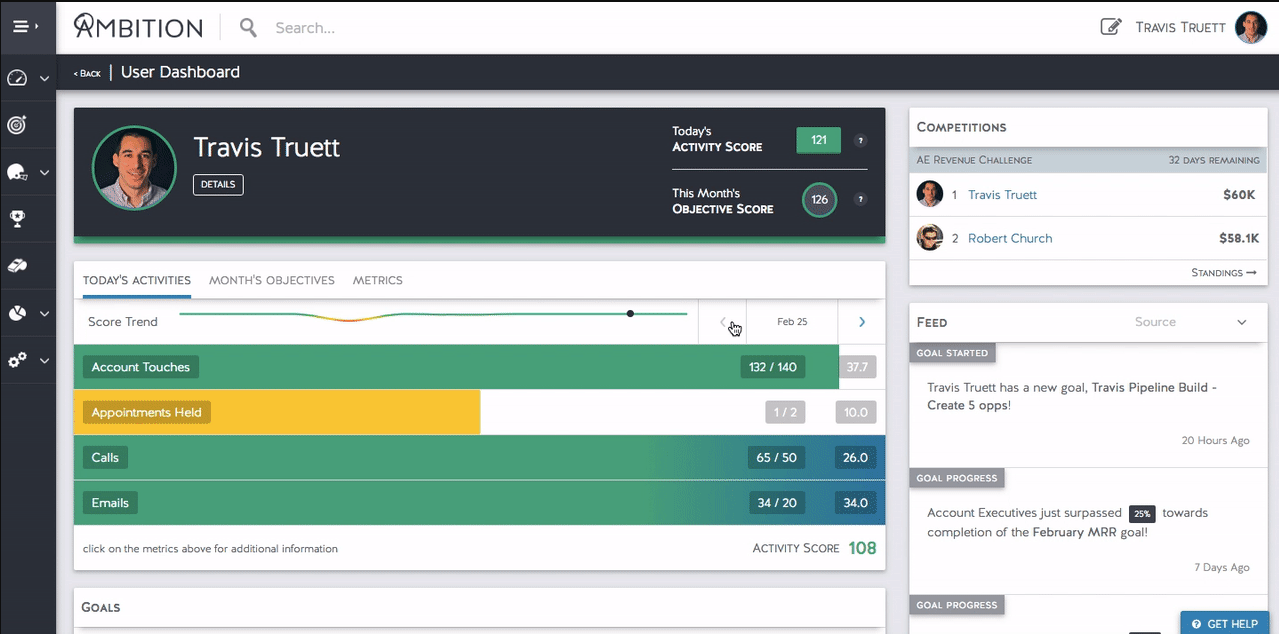
With features like coaching check-ins, scorecards, and leaderboards, Ambition helps teams stay aligned, motivated, and accountable, especially in hybrid or remote sales environments.
An in‑app, just‑in‑time enablement assistant that surfaces training, content, process guidance, and answers directly where reps work – in tools like Salesforce, Gmail, Slack, Zoom, or Chrome.
Powered by Spekit AI, it proactively recommends assets and instructions and auto‑syncs content from systems like Google Drive and Confluence. Spekit also provides analytics measuring ramp speed, usage rates, and content impact, helping ops teams optimize programs and prove ROI
- 1up
1up supports ramp and ongoing training by bringing your entire enablement knowledge base into one searchable assistant. It integrates with Slack, Teams, or Google Chat, allowing reps to ask any product, process, or objection-handling question and receive instant, accurate answers pulled from your trusted content source.
This makes 1up ideal for delivering on-demand, real-time training support that scales without adding enablement headcount.
Buyer engagement and collaboration
How it helps: Collaborating on deals and keeping buyers engaged.
Modern B2B buying journeys involve multiple stakeholders and a complex mix of research, demos, approvals, and alignment. The tools in this category help buyers not just receive content, but use it effectively – to self-educate, build internal consensus, and drive the deal forward together.
Here are three tools designed with buyer collaboration at their core:
- Flowla
Flowla provides buyers with a shared workspace for buyer-seller collaboration including detailed mutual action plans. Champions can invite internal stakeholders into the hub where they can review steps, ask questions, tag teammates, and monitor progress, all alongside the seller.
.webp)
By structuring collaboration around shared goals and timelines, Flowla ensures clarity and accountability, helping teams align internally without endless email threads.
- Storylane
Storylane empowers buyer champions with interactive, self-serve demos that can be shared with decision-makers on their own terms. Embedded within the buyer hub (like Flowla), these personalized walkthroughs allow internal teams to engage deeply with product features, add annotations, and access targeted explanations making it easier for champions to drive internal education and stakeholder buy-in.
- Consensus
Consensus focuses on holistic buyer enablement, empowering buyers to self-educate, build consensus, and move deals forward on their own terms. It provides interactive demos, simulations, and decision support tools that buyers can explore independently.
Additionally, Consensus offers resources like calculators, stakeholder mapping frameworks, and collaboration guides, helping champions manage internal alignment, surface concerns, and track progress through what they call Demolytics® and collaborative planning methodologies.
Playbooks and workflow automation
How it helps: Standardize winning plays and automate repetitive tasks.
These platforms help revenue teams scale their best strategies by translating them into repeatable processes. They automate routine actions, trigger playbook reminders, and ensure deals progress without manual oversight.
Here are four standout tools:
- Flowla
Flowla delivers workflow automation within its buyer-facing hubs. As buyers engage, Flowla triggers playbook actions, like prompting stakeholder outreach, updating the CRM, scheduling handoffs, or escalating renewal preparation.
It turns passive buyer activity into live workflow events, keeping both sellers and buyers on track through every stage of the deal.
- Chili Piper
Chili Piper streamlines scheduling and routing around demos, meetings, and handoffs. It ensures instant booking with calendar-integrated forms, assigns meetings to the right rep or CS contact, and syncs details into your CRM.
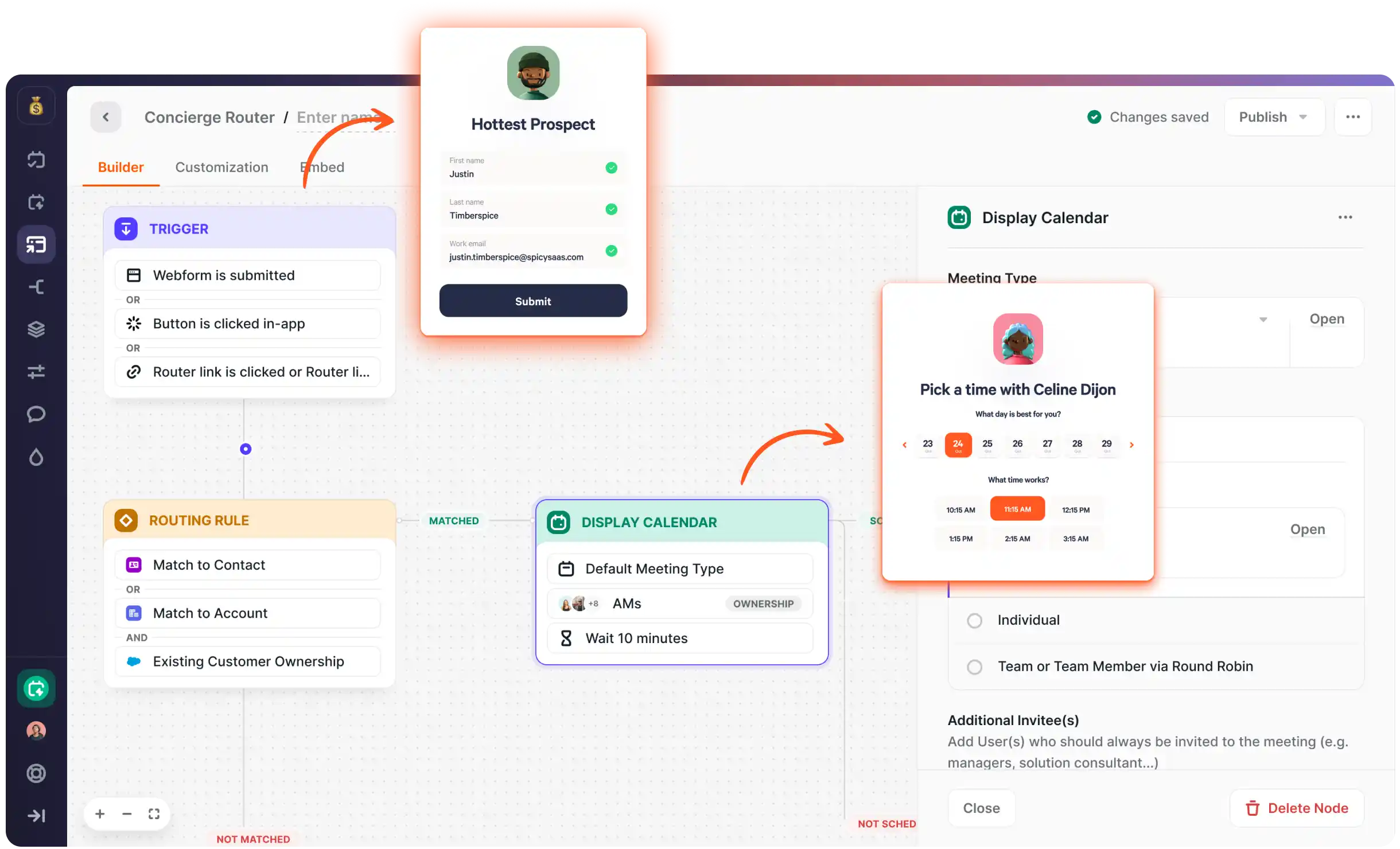
The result: less "ping-pong" with prospects, fewer no-shows, and consistent handoff experiences for buyers.
- Rattle
Rattle connects platforms like Salesforce, Slack, or Teams with a no-code workflow engine. It automates key triggers – such as stale deals, missing fields, or stage changes – and sends contextual alerts into chat apps.
Reps can update CRM fields directly from Slack/Teams, while Rattle’s deal rooms centralize next steps, coachable moments, and playbook guidance without switching tools
- WinnAI
WINN AI offers a “Vibe Selling™” experience with live, real-time playbook enforcement during calls. It listens alongside reps, prompts engaging questions, tracks playbook adherence, and auto-generates call summaries and follow-up emails.
Reps can focus on conversation while WINN captures insights, updates the CRM, and ensures next steps are executed
Revenue intelligence
How it helps: Analyze conversations, market signals, and competitor activity to improve messaging, coaching, and forecasting.
Winning deals isn’t just about selling harder – it’s about selling smarter. Revenue intelligence tools help go-to-market teams capture what buyers are saying, how they’re behaving, and what’s happening in the market around them. These insights inform better coaching, sharper positioning, and more accurate forecasts.
Here are four tools helping teams unlock real-time revenue insights:
- Fireflies AI
Fireflies AI joins online meetings to record, transcribe, and summarize conversations automatically. After each call, teams get searchable transcripts, sentiment analysis, and key topic highlights making it easy to review coaching opportunities and uncover buyer pain points.
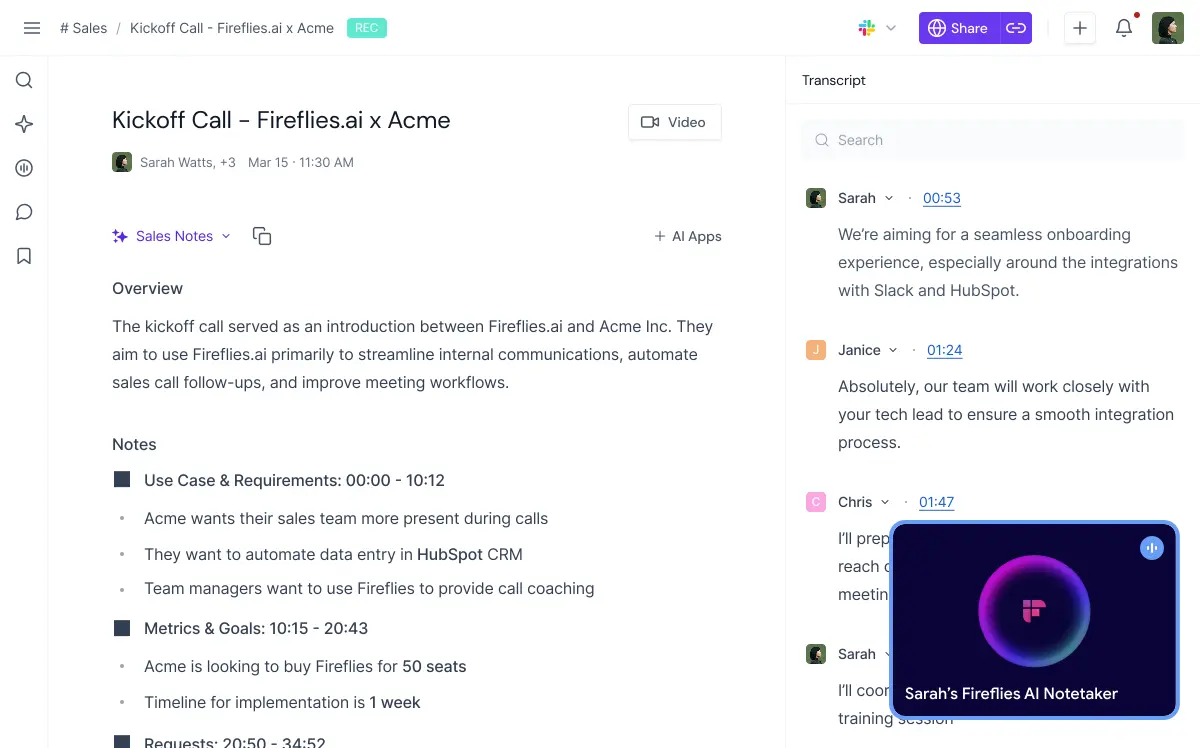
It integrates with popular conferencing platforms and CRMs, logging insights directly from the meeting into Salesforce or HubSpot for follow-up and trend analysis.
- 6Sense
Although known for account-based marketing, 6sense also offers robust revenue intelligence. It captures both anonymous and known buying signals – alerting sellers when accounts are active – and uses AI to predict buying stage, contact engagement, and likelihood to close.
Integrations with CRM and marketing tools help sellers prioritize high-value accounts and tailor messaging with real-time intent data.
- Crayon
Crayon operates in the competitive intelligence space, helping teams monitor competitors and market shifts. It automatically tracks changes in messaging, pricing, product updates, and more, delivering real-time insights into competitors' moves.
Sales teams can push these updates into CRM or Slack to prepare reps before key calls, update battlecards, and proactively address threats.
All-in-one sales enablement platforms
How it helps: Combine content, training, analytics, and deal support into a single platform.
These tools bring together content management, onboarding, coaching, and insights into a unified system, helping leaders drive consistency and scale enablement efforts across global teams.
But with that power comes complexity. These platforms are often heavyweight, expensive, and require significant implementation effort, making them best suited for mature sales orgs with dedicated enablement teams and clear change management processes.
Here are three of the most widely adopted platforms in this space:
- Mindtickle
Mindtickle offers a comprehensive revenue readiness platform featuring onboarding, ongoing training, and knowledge reinforcement with built-in assessment and gamification.
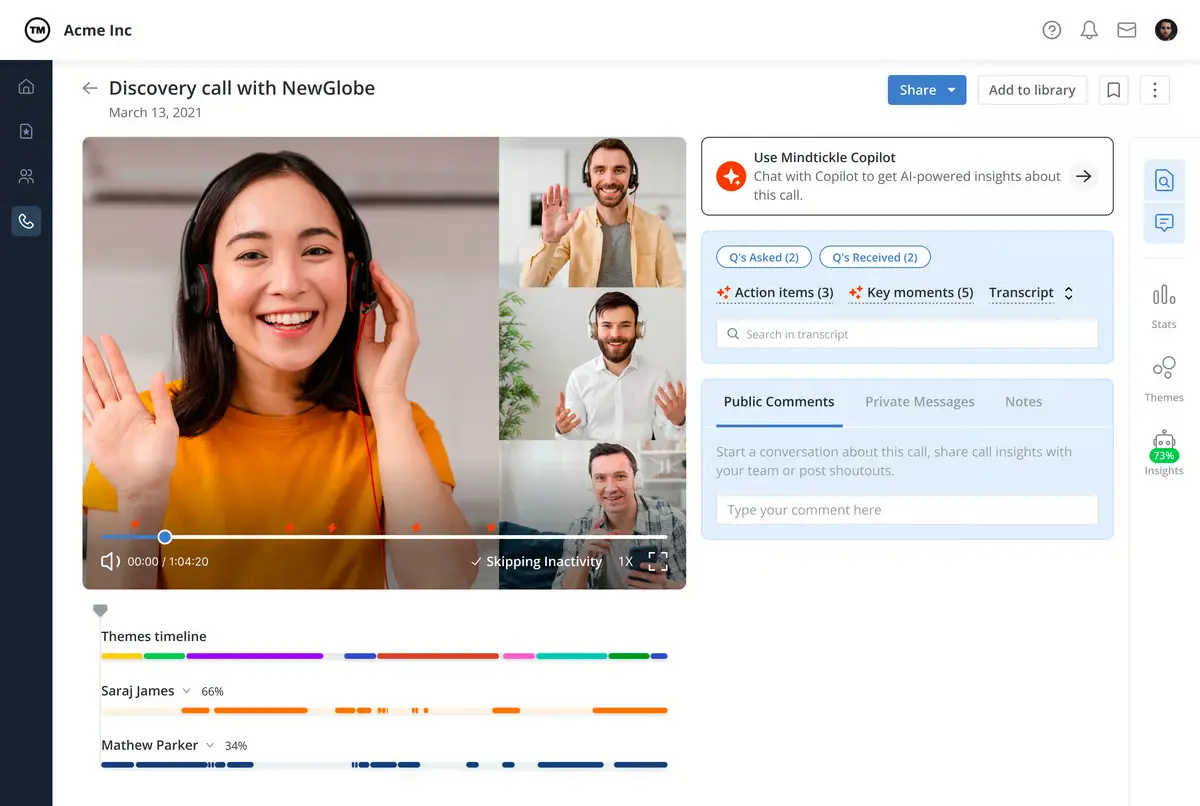
Its interactive learning paths, scoring, and certifications help ensure reps are equipped to follow best practices consistently, while analytics measure training impact on revenue and performance.
- Allego
Allego blends content management with video-based coaching and in-the-moment learning. Sellers can record and share role-play videos, get peer or manager feedback, and access on-demand short-form micro-learning directly aligned to their deals.
Allego also integrates with your existing content hub and CRM, ensuring that content, coaching, and knowledge exchange are all part of an efficient, seller-centric workflow.
- Seismic
Seismic is a powerful enablement platform combining content management, personalization, training, and sales analytics. Sellers get dynamic, playbook-driven content recommendations, while idle content is weeded out through performance insights.
Seismic’s patented analytics surface content that helps close deals, helping Marketing and Enablement continually refine what works.
.webp)
How to choose the best sales enablement software for your team?
When choosing the right sales enablement software, don’t rush to pick a tool with the longest feature list. It’s more important to find the tools that actually fit how your team sells and how your buyers buy.
Here are a few factors to consider:
1. Team size & structure
Smaller teams often benefit from lean, purpose-built tools that do one or two things really well. Larger, more complex teams may need integrated platforms to support multiple functions – content, training, automation, and analytics – at scale.
2. GTM motion & buyer journey complexity
Selling into SMBs looks very different from selling into enterprise. If your motion involves long sales cycles, multiple stakeholders, or heavy post-sale engagement, prioritize tools that support both pre-sale execution and post-sale collaboration.
3. Integration & workflow fit
The best tool is the one your team will actually use. Look for software that fits into your existing stack (CRM, Slack, calendar, LMS, etc.) and supports your current workflows, not one that requires a complete overhaul.
Once you pick a tool (or tools) that ticks all of the boxes, don’t rush roll out everything at once. Start with one or two tools that solve clear pain points, track usage and feedback, and iterate from there. A good enablement stack evolves with your process, not ahead of it.
A well-integrated sales enablement stack doesn’t just make your sellers faster. It aligns your entire revenue team around what works, removes friction for your buyers, and gives you visibility into every part of the journey.
Why Flowla might be the right fit for your team
Flowla is built for modern revenue teams that want to move faster while delivering a better buying experience. It combines guided buyer collaboration with automation that keeps deals and handoffs on track without adding more manual work.
Here’s where Flowla shines:
- Mutual action plans that drive alignment – Flowla makes it easy to co-create timelines and responsibilities with your buyer, helping everyone stay on the same page.
- Collaborative workspaces, not just content hubs – Buyers can invite stakeholders, ask questions, and track progress directly in the shared space.
- Automated workflows that keep momentum high – Trigger follow-ups, CRM updates, onboarding handoffs, and more based on buyer activity — all behind the scenes.
- Works across Sales and CS – From deal execution to onboarding and renewals, Flowla supports the full revenue journey.
- Fits seamlessly into your stack – With integrations for CRM, calendar, Slack, and e-signature, Flowla supports your workflow without requiring new habits.
Flowla is a great choice for teams running multi-stakeholder deals, scaling post-sale processes, or looking to bring structure to sales execution without overcomplicating the tech stack.
Start orchestrating a smarter revenue pipeline
Book a personal demo to see Flowla in action
Let's chatRecommended for you
Want to discover Flowla?
Your first 5 rooms are free. No credit cards, no commitments.
.webp)


.webp)
.webp)
.webp)
.webp)